Ah, Vodka! Not just a spirit, but the spirit of countless tales, shenanigans, and heartfelt toasts! This clear, often misjudged beverage, packs in itself an eclectic blend of history, culture, and countless surprising trivia that goes beyond its deceptive simplicity. Ever wondered about its crisp origin, sprouting from the dense histories of Russia and Poland, or pondered its etymological roots, intimately intertwined with our life-essential: water?
Oh, but there’s more! This distilled marvel has danced through times of plague, weaving through medicinal uses, and even, would you believe it, made a name in the cosmos! Buckle up, as we embark on a journey, unearthing 30 fun facts about vodka that promise to be a heady mix of startling revelations and spirited entertainment!
1. The Origination Debate: Russia vs. Poland
Ah, the age-old duel: who brewed it first? Russia and Poland, two behemoths perpetually locked in a spirited debate (pun intended) over the origination of vodka. While both nations stoutly claim the title of vodka’s birthplace, the historical records offer some clarity, albeit smeared by the mist of time. Poland introduces vodka, or a spirit resembling it, to the world in its historical documents as “gorzała” as far back as the 8th or 9th century, with more concrete records in 1405 Sandomierz Court Registry. Yet, no solid artifacts from that era corroborate this evidence.
On the other hand, Russia’s vodka trail picks up in the 9th century, with “bread wine” being distilled in monasteries. But, it was only in 1751 when the first vodka distillery, owned by a private entrepreneur A. Smirnov (Yes, the precursor to the Smirnoff brand), was officially documented. Thus, the history of vodka remains alluringly nebulous, each sip perhaps a nod to centuries of fervent distillation artistry across Slavic terrains.
While the cradle of vodka may always be shrouded in historical mystery, what is palpable is the global adoration it has garnered. International love for vodka has permeated across borders and bars alike, making it a drink that unites cultures, histories, and occasionally, rivals.
2. Vodka’s Etymological Roots: A Water-y Connection
The term “vodka” is born from the Slavic word “voda,” meaning water, reflecting its unblemished clarity. But how did this term evolve to represent our beloved spirit? This nomenclature transformation took place during the 17th and 18th centuries when Russian scientists learned to distill a spirit that was quite clean and safe to drink, which became a “small water” in its importance and ubiquity.
The term “whisky”, for instance, shares a similar journey, derived from the Gaelic “uisge beatha,” meaning “water of life”. Thus, vodka’s name traces a path back through linguistic and cultural shifts, offering a clear window into how vital this spirit was considered in communal and daily life.
3. Vodka in Medicine: A Spirited Healer?
Vodka, touted as a crucial medicinal staple in the past, bore significance far beyond its recreational use. Historical documents from the 16th century testify to vodka being sold in Moscow’s pharmacies as a “medicinal drink” that could “increase fertility and awaken lust.” It was utilized for making tinctures due to its ability to dissolve fats, essential oils, and resins, besides being a vital component in the production of gunpowder.
Moreover, it’s documented that renowned chemists like Dmitri Mendeleev (1834–1907), lauded for formulating the Periodic Law, were instrumental in determining the optimal alcohol content for vodka at 38%, which was later rounded up to 40% for simplified taxation calculations. Vodka, in this regard, flowed through various aspects of society, from the intimately personal to the explosively public.
4. Distillation Distinction: From Crudeness to Purity
The history of vodka distillation is, in essence, a journey from primitiveness to refined sophistication. Initially, the spirit was far from the polished, nearly neutral nectar we enjoy today; early vodka was often murky, with impurities and robust flavors that were miles away from being described as subtle. The pivotal point in vodka’s metamorphosis was the introduction of the continuous column still, patented by an Irishman, Aeneas Coffey, in the 1830s. Though Coffey’s invention was initially snubbed by his homeland and neighboring Scotland, Russia and Poland saw its potential.
Implementing the column still revolutionized vodka production, enabling distillers to achieve a much cleaner, smoother spirit. This apparatus allowed for a significantly higher alcoholic content, stripping away the impurities and, therefore, reducing the harshness and unwanted flavors. Thus, distilled vodka transitioned from a somewhat coarse drink to the pure, smooth, and often luxurious spirit savored in today’s world.
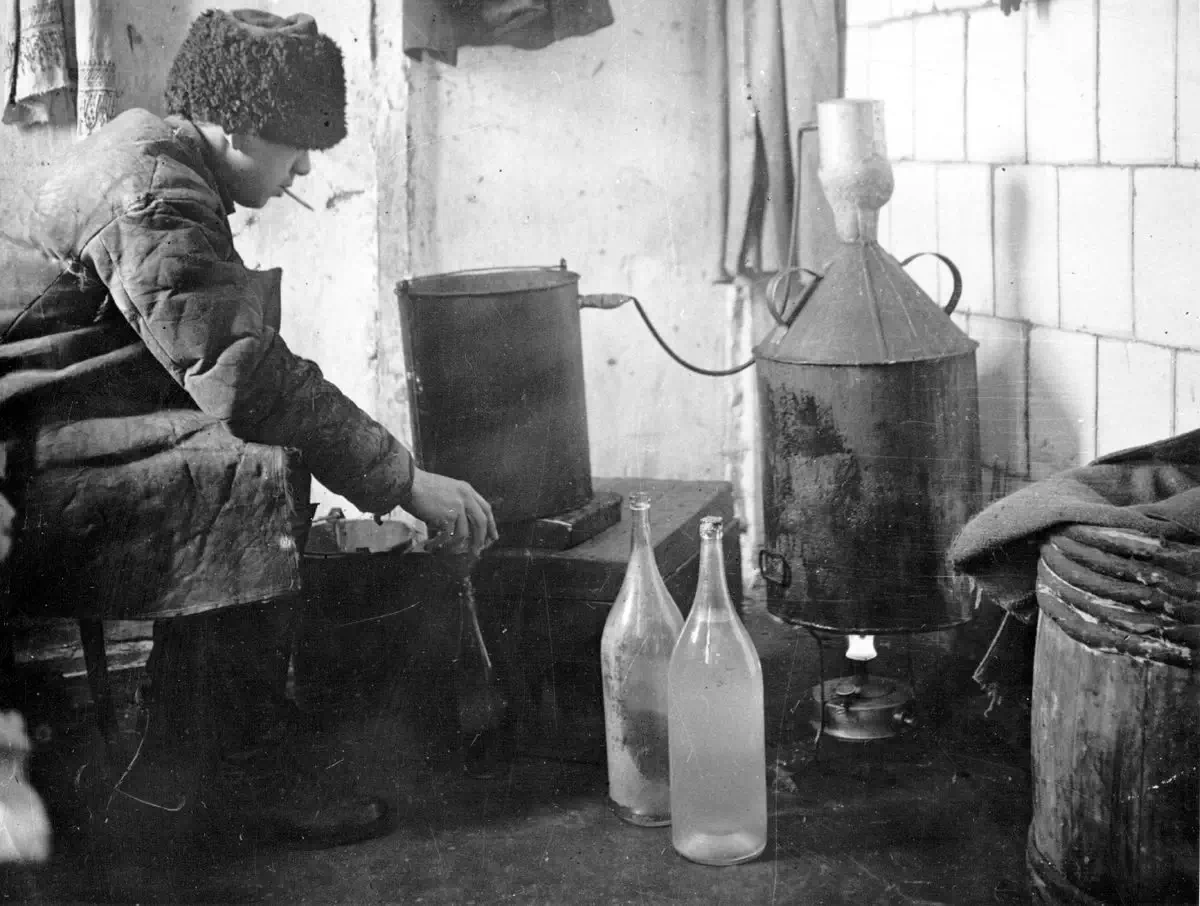
Around 1930, a bootlegger concocts samogon, a cherished homemade spirit, in post-revolutionary Russia. Image: atlasobscura.com
5. Unconventional Uses: Beyond the Drinking Glass
Vodka, while renowned as a graceful libation, has also held numerous unconventional roles outside of a chilled glass. For instance, due to its high ethanol content, vodka was utilized as a disinfectant and antiseptic during the times when medical resources were scarce or during wartime. The alcohol in vodka can dissolve many substances, making it a handy cleaner and solvent. It could cleanse wounds, purify water, and even assist in preserving perishables, playing a surprisingly versatile role in various scenarios.
Moreover, in the realm of personal care, vodka has also been hailed for its cosmetic virtues. Used in hair care routines, it is said to improve the texture and health of hair when used in tandem with other ingredients. Its antiseptic properties found utility in skincare regimes too, aiming to cleanse and tighten pores, highlighting vodka’s unexpected yet intriguingly varied applications.
6. Vodka’s Astronomical Association: Into the Cosmos!
Vodka’s reach has even stretched beyond our terrestrial confines, breaching into the cosmic vastness of space. Russian cosmonauts in the earlier days of space exploration were allowed a ration of vodka as it was believed to inhibit the absorption of radiation, although there isn’t scientific backing to this claim. Moreover, the spirit was perceived to be a psychological aid, assisting astronauts to relax in the extremely stressful environment of space.
It didn’t just stop at human consumption. During the Zond 6 mission to the moon in 1968, a spacecraft crash resulted in an unfortunate spill of cognac into the radio components. What to do? Vodka saved the day! Engineers at the USSR mission control utilized vodka to rinse and rescue the jeopardized radio equipment, crafting a peculiar and almost whimsical tale of vodka in space exploration.
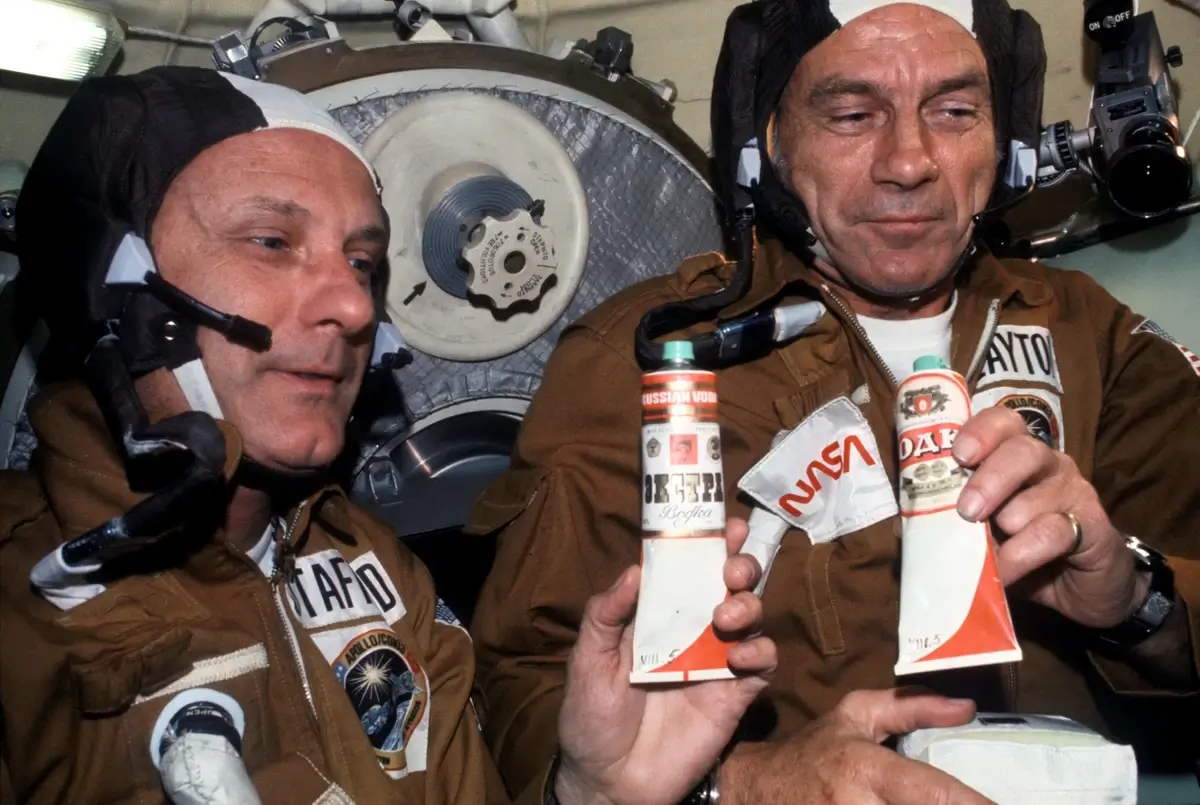
Image: Wikimedia Commons
7. Tackling Tastelessness: Vodka’s Subtle Palate
Despite its reputation as a neutral or “tasteless” spirit, vodka possesses a subtle, often elusive palate, discernable to the astute taster. Vodka’s flavor profile can be gently manipulated by its primary ingredients (whether it be grains, potatoes, or other bases) and the distillation process, offering a range that is paradoxically understated yet diverse. Rye vodkas, for instance, are generally perceived as spicier, while potato vodkas are often described as creamier.
This discernment in taste isn’t solely a modern evolution. Even back in the day, subtle distinctions were noted and appreciated among the various regional vodkas, derived from the specifics of local production methods and ingredient quality. Thus, beneath its ostensibly neutral demeanor, vodka hides a quietly vibrant spectrum of flavors and textures, waiting to be explored by those who wish to dive deeper.
8. Covert Cocktails: Camouflaged Concoctions
Slipping through the prohibition era, particularly in the USA (1920-1933), vodka found a surreptitious ally in cocktails, as its relatively neutral profile could be easily masked by other ingredients. This was not merely a tactic of discretion but became a burgeoning drink culture that birthed classics like the Bloody Mary, originally known for its capability to cloak vodka’s presence with its robust tomato and spice blend. Similarly, the Moscow Mule, served in a distinctive copper mug, wasn’t merely a fashionable choice but a strategic one, as the ginger beer neatly veiled the alcohol beneath its effervescence and spice.
This era did not just seek to conceal vodka but accidentally heralded an era where vodka became the soul of numerous beloved cocktails. These cocktails, born out of necessity, waltzed through the speakeasies of the 1920s, managing to twirl their way into the esteemed halls of classic mixology.
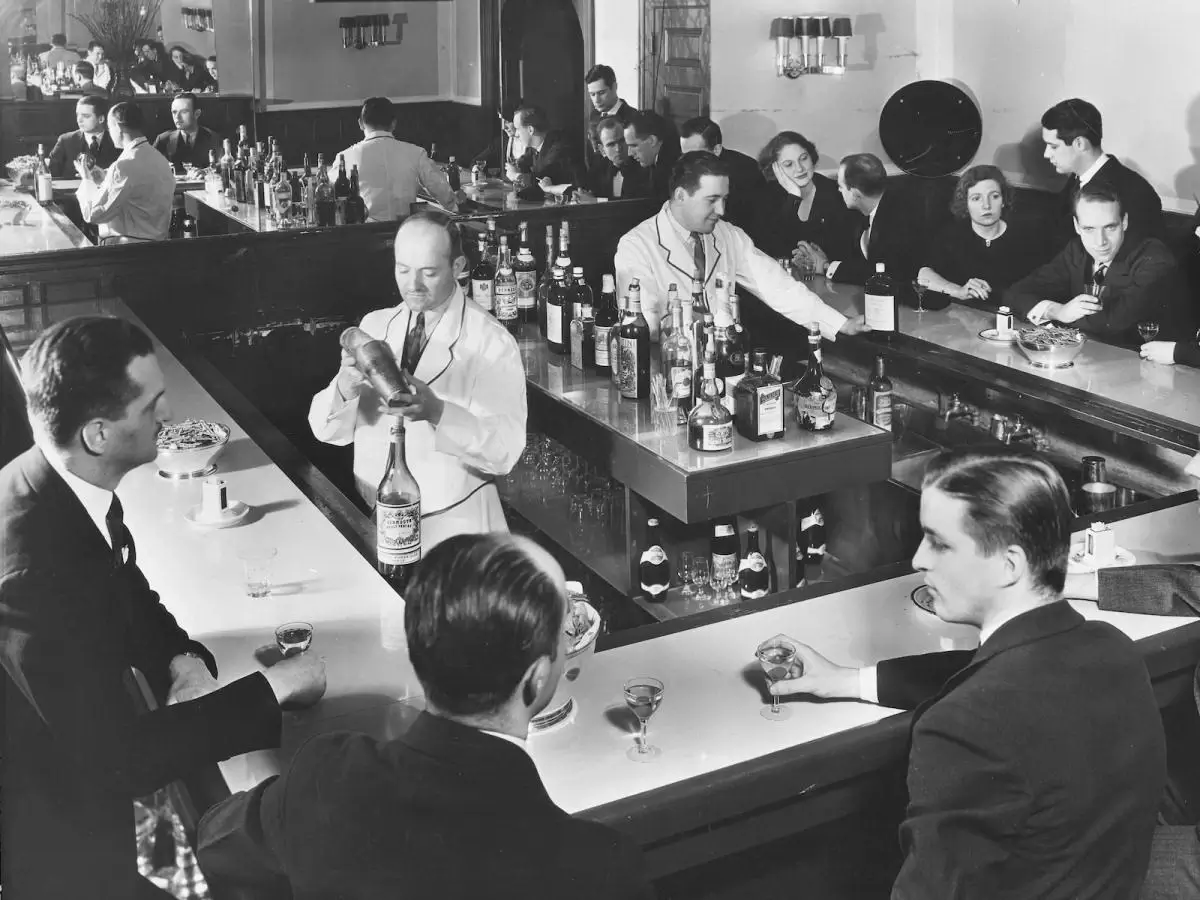
Image: Yahoo
9. Flavoured Vodka: An International Affair
Vodka’s neutral character offers a pristine canvas, inviting an array of flavors to play and intertwine with its spirit. This is not a contemporary concoction, as historically, Russia and Poland have steeped their vodkas with herbs, fruit, and spices for centuries. In Russia, pertsovka, a pepper-flavored vodka, was popular, while in Poland, zubrówka, a bison grass-infused variant, was savored. This tradition leapt across borders and epochs, blossoming into a global and international affair, as brands today propose a dizzying array of flavored vodkas, from the classic citrus to the peculiarly delightful whipped cream or popcorn.
Exploring flavored vodkas is akin to a jubilant jaunt across varied cultures and palates, each infusing the spirit with their distinctive local flavors and zests, rendering vodka not just a drink, but a spirited, global tapestry.
10. Vodka Museums: Preserving the Spirited History
Preserving the intricate history and culture of vodka, several museums across the world, particularly in Russia and Poland, stand testament to its timeless spirit. The Vodka Museum in Moscow and the Polish Vodka Museum in Warsaw not only enshrine the historical artifacts and distillation apparatus but also encapsulate the soulful tales and cultural significances embedded within the spirit. Visitors meander through epochs, witnessing the evolution of vodka from a primitive distillate to the sophisticated spirit it is today.
These museums are more than mere buildings; they are the guardians of centuries of trials, triumphs, innovations, and traditions, ensuring that the spirited history of vodka is eloquently preserved and shared with every curious soul who steps within.
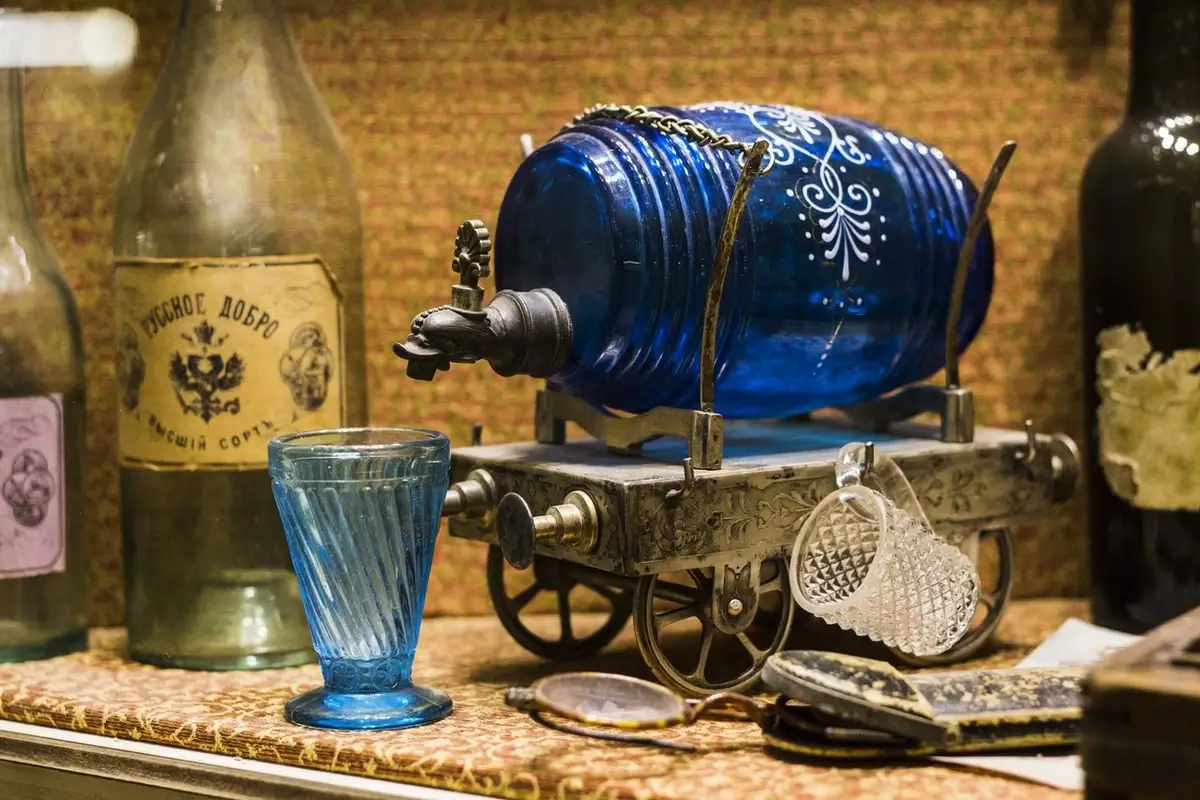
Image: Bitoflife
11. Surprising Vodka Variants: Not Always Neutral
While vodka is celebrated for its purity and neutrality, certain variants daringly deviate from this norm. Absurdly, a bad fact here could be that vodka always prefers to remain unassuming! From the Arctic chill of Iceland’s Reyka, which claims to be the world’s purest vodka due to lava rock filtration and arctic spring water, to the smoky, whisky-like character of Alaska Outlaw’s vodka, the spectrum of vodka can astonishingly waltz from the expectedly subtle to the delightfully bizarre.
These bold, surprising variants dismantle the stereotypical understanding of vodka, revealing that beneath the veil of neutrality, lies a world where vodka can be audacious, innovative, and astonishingly varied.
12. Vodka’s Influence on Economy: Fueling Finances
Vodka’s financial footprint is not to be underestimated, especially considering its significant impact on countries like Russia. The spirit has historically been a key economic driver, notably during the Tsarist era where vodka taxes represented a sizable chunk of the state’s revenue. In fact, it was around a whopping 40% during the 19th century. Later, during the USSR era, despite anti-alcohol campaigns, vodka sales persisted as a vital income source, somewhat binding together economic and cultural threads.
Even in modern Russia, the fiscal significance of vodka is undeniable. The spirits sector, predominantly led by vodka, contributes substantially to the nation’s GDP and tax revenues. The economic interplay between vodka sales and fiscal policy is often a topic of research, underlining the drink’s influential role in fueling national finances.
13. Glass and Gherkins: A Classic Pairing
Vodka and food pairing have a unique place in Eastern European culinary traditions, with vodka and pickles (gherkins) being a particularly celebrated duo. It’s not a random pair; there’s a science behind it. The crisp acidity of pickles acts as a palate cleanser, neutralizing the burn of vodka and readying the mouth for the next flavorful bite or sip. It’s a subtle yin and yang, where the fiery path of vodka is soothed by the zesty crunch of a gherkin.
In Russia, this practice is deeply embedded, with even a special word “zakuska” referring to snacks, often pickled, eaten specifically with vodka. The cultural and gastronomical implications of this pair extend beyond merely enjoying a drink but into realms of hospitality and camaraderie.

Image: Pazlyigra
14. Black Death Vodka: A Plague of Flavor?
“Black Death Vodka,” despite its seemingly ominous name, comes with a rich, albeit cheeky, history. Originating from Iceland, this spirit was initially brewed in 1906 when the island nation legalized alcoholic drinks after a long-standing ban. The name and the skull on its label, adopted later in the 20th century, was more a nod to marketing bravado than morbidity, becoming a symbolic resistance against the strict Icelandic alcohol regulations of the time.
Known for its barley-based, 40% ABV potency, Black Death Vodka found a curious popularity abroad, notably in the United States during the 1980s, proving that branding, even with ostensibly morbid undertones, can surprisingly elevate a product to international acclaim.
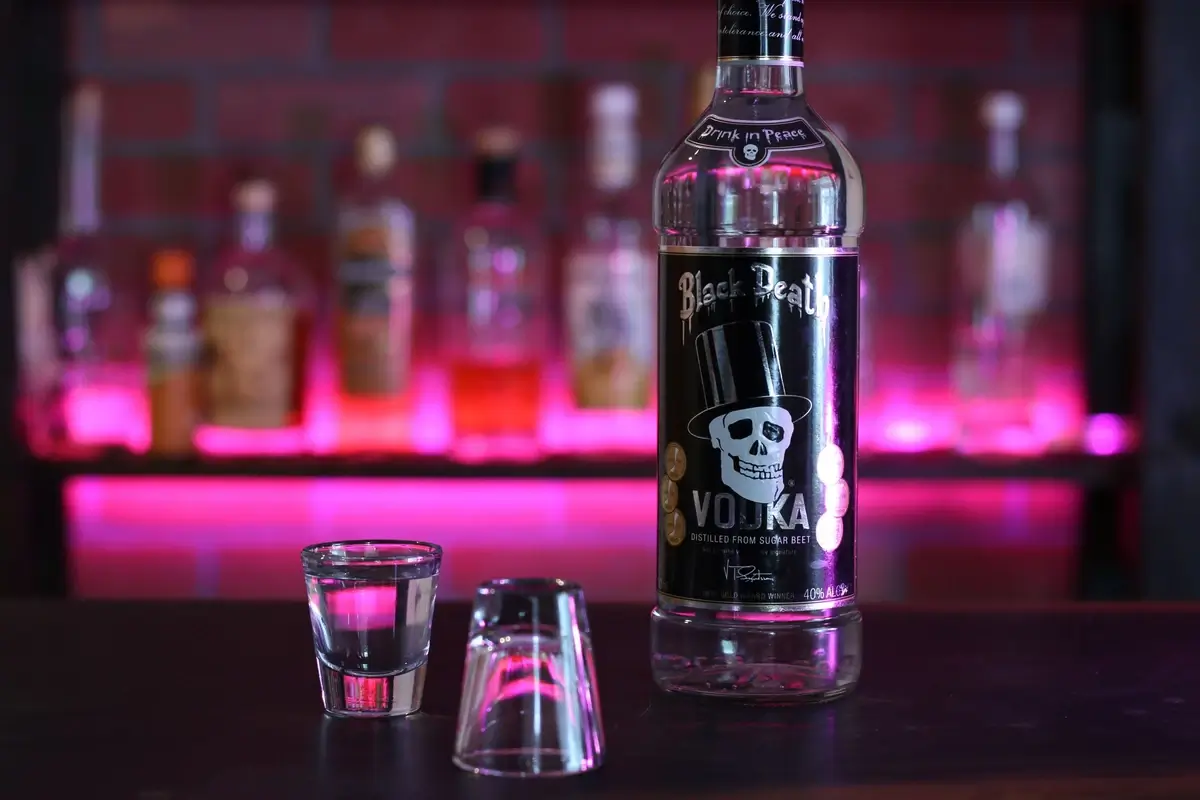
Image: twitter.com/Black_DeathUS
15. Chasing the Burn: The Aftermath of a Shot
Vodka, renowned for its characteristic burn, triggers a complex physiological response once it meets the palate. That quintessential warmth, often following the initial burn, is the result of ethanol causing blood vessels to dilate, especially those nearer to the skin’s surface. Thus, despite vodka being served cold, it kindles a warmth post-consumption, a contrast that has charmed drinkers for centuries.
Scientifically, the burn is attributed to ethanol activating the VR1 heat receptors in the mouth, signaling “heat” to the brain, even though the drink is physically cold. It’s this physiological paradox, perhaps, that adds an extra layer to the vodka sipping experience, merging sensory contrasts in a single, simple shot.
16. Fermentation Fun: Grains, Potatoes, and Beyond!
Vodka’s diversity lies quietly in its fermentation roots, a fun fact that often surprises the casual drinker. Originating primarily from grains or potatoes, vodka can actually be produced from anything that contains sugar or starch. Traditional Russian vodka leaned heavily on grains like wheat and rye, while Polish distillers often opted for potatoes, each bestowing a subtle difference in flavor, texture, and quality.
Innovative distillers globally have expanded the portfolio, utilizing items like grapes, beets, and even milk sugars for fermentation. The concept: if it ferments, it can probably become vodka, offering a myriad of fascinating subcategories, each with their unique notes, depth, and character.
17. Vodka and Vegetarians: An Ethical Choice?
A smooth fact for our vegan and vegetarian friends: most vodka is inherently an ethical choice for your diet! The foundational elements of vodka – water and ethanol – are typically derived from grains, potatoes, or other starch/sugar-rich plants. Moreover, the distillation process typically doesn’t involve any animal products, making it a safe sip for those adhering to plant-based diets.
However, a fair note: some specific brands or flavors might use animal products during production or filtering processes (like using bone char for filtration or honey for flavoring), always worth a glance at the label or a quick brand research detour before pouring that glass!
18. A National Symbol: Russia’s Spirit
When pondering vodka, it’s nearly impossible not to associate it with Russia, where it’s not merely a beverage but a national symbol. The history of vodka in Russia is drenched in tradition, policy, and culture, reflecting not only a preference but a deeply rooted aspect of Russian life. The very essence of vodka is interwoven with the highs and lows of the nation, from the Tsarist and Soviet eras to present day.
Renowned brands like Smirnoff, originally from Russia, have played pivotal roles in making vodka globally synonymous with Russian culture, aligning the nation indelibly with the spirit on an international stage.
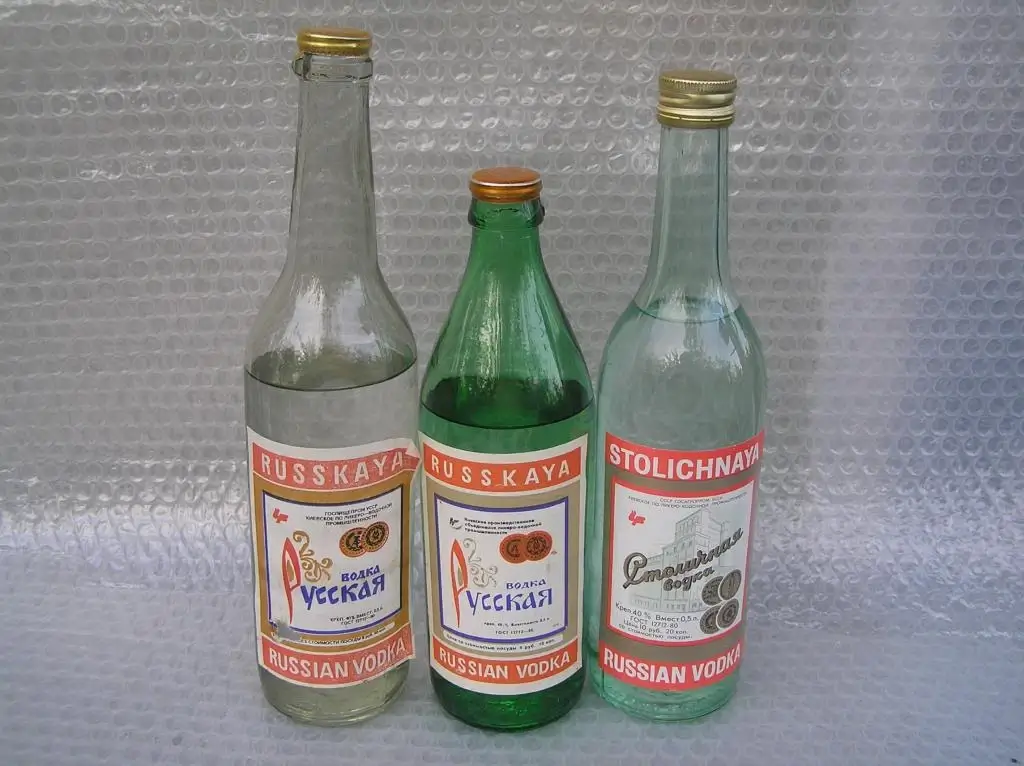
Image: Mixyfotos
19. Poland’s Purity Laws: Regulation and Reputation
Poland takes its vodka seriously, and it’s evident in its commitment to maintaining the spirit’s purity through stringent regulations. The Polish Vodka Regulation of 2006, a truly fascinating and perhaps surprising fact for vodka enthusiasts, details the strict production conditions that must be adhered to for a vodka to be legally labeled as ‘Polish Vodka’. Only traditional Polish grains (rye, wheat, oats, barley, and triticale) or potatoes can be utilized, and the entire production process must occur in Poland itself.
These purity laws aren’t just about production – they’re about preserving a legacy, a national reputation that has polished Poland’s image as a producer of some of the purest, high-quality vodka on the international market.

Image: geekipodrozniki.pl
20. Hollywood’s Hidden Star: Vodka in Film
When it comes to Hollywood, vodka has been quietly stealing scenes and soothing stars since the silver screen first flickered into view. Here’s a fun fact that integrates both: vodka, especially during the Golden Age of Hollywood, wasn’t just a popular prop or character accessory; it was also meticulously marketed and product-placed. Remember the vodka martini, “shaken, not stirred”? Despite gin traditionally being the spirit of choice for martinis, James Bond’s (especially as portrayed by Sean Connery and Roger Moore) preference for vodka arguably shifted public perception and popularity toward vodka martinis.
Vodka’s role was not only relegated to a cinematic prop but also served as a subtle nudge towards cultural and drink trends. With actors like Humphrey Bogart and the Rat Pack not just flaunting it on screen, but also being renowned vodka drinkers off-set, the spirit subtly seeped into the glamorous image of Hollywood’s heyday. In 1965, Smirnoff vodka even capitalized on the Bond craze with its campaign, “Smirnoff leaves you shaken and stirred.”
It wasn’t merely a symbol of elegance or mischief in narratives but also found a tangible presence at Hollywood parties and gatherings. Numerous classic Hollywood stars, such as Frank Sinatra and Dean Martin, were notable off-screen vodka enthusiasts, thus elevating its status as a fashionable and sophisticated spirit among fans and aspiring actors.
21. Spirited Records: The World’s Largest Vodka Collection
Grasping the Guinness World Record, the Vodka Museum in St. Petersburg, Russia, hosts a bewitching array of over 3,000 different vodka bottles from across the globe – a truly amazing fact for any spirit enthusiast. It’s not just a staggering assortment but a tangible journey through vodka’s multifaceted history, with some bottles dating back to the Soviet era.
This collection reflects not only the spirit’s diversity but a chronicling of vodka’s historical evolution, portraying shifts in manufacturing, branding, and consumption trends through a tangible, bottled timeline.
22. Soviet Union Vodka: A State-Run Affair
Vodka was more than a staple drink in the Soviet Union; it was a state-run affair, engulfed in politics and economics. With its production and pricing strictly controlled by the government, vodka became a crucial economic pillar, contributing significantly to the state’s revenue. An interesting fact is that at one point, vodka sales provided the Soviet government with a third of its total income, embedding the spirit deeply into the economic and social fabric of the nation.
Vodka’s omnipresence in the Soviet Union was twofold, serving both as a fiscal tool and a mechanism of socio-political control, quenching the masses while fueling the state’s coffers.
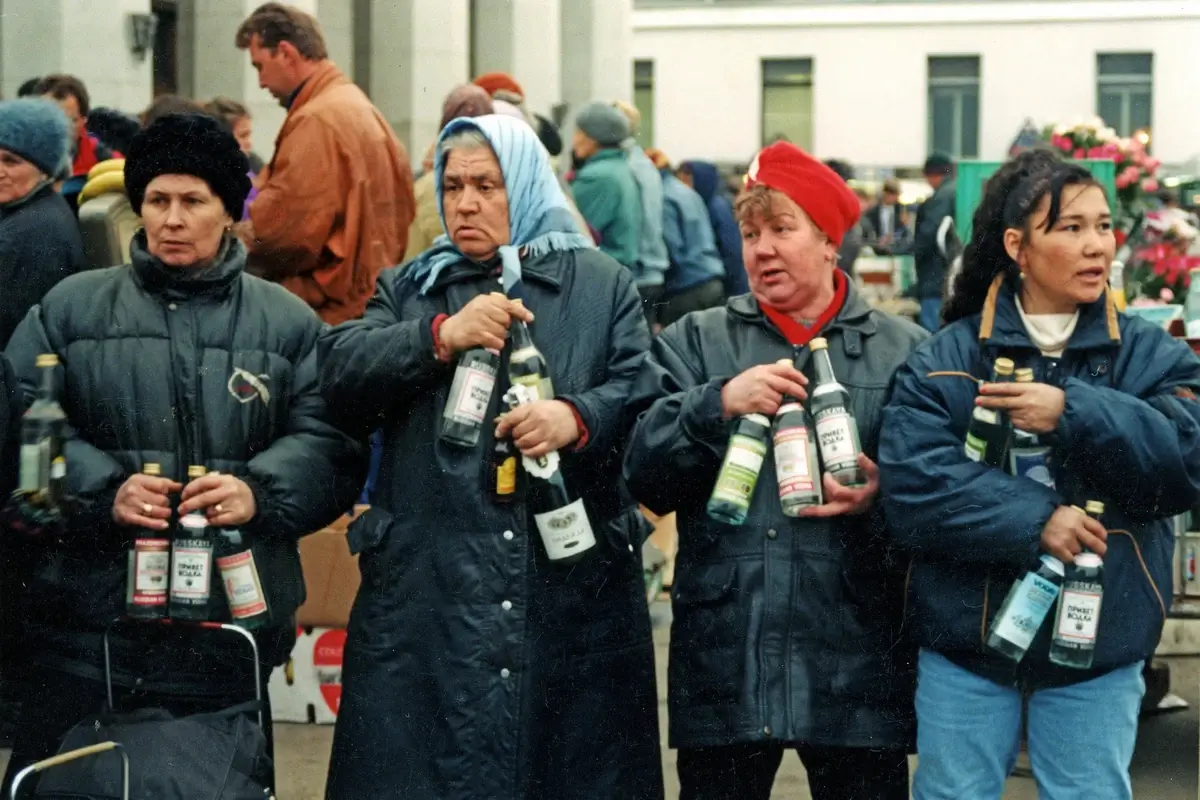
Image: Imageban
23. Monks and Distillation: A Holy Connection?
The history of vodka distillation has divine roots, literally! Monks, specifically in Russia and Italy, played a notable role in developing distillation techniques. Italian monks brought knowledge of distillation practices to Russia in the 15th century, forging a holy yet curious link between religion and the evolution of vodka’s production techniques.
While Russian vodka initially had medicinal applications, its consumption gradually transcended into recreational spaces. Monasteries in Russia often housed some of the first distilleries, where monks, amid their religious duties, diligently explored and honed vodka distillation practices, silently scripting spiritual chapters into the spirited history of vodka.
24. Vodka and Vanilla: An Unexpected Duo
In the world of spirits, there are some combinations that naturally whisk us away. Enter the unexpected but beautifully harmonious duo of vodka and vanilla. The world of flavored vodka is vast and varied, but the history of vanilla-infused vodka is particularly intriguing. The vanilla bean, native to Mexico, was used by the Aztecs for flavoring their chocolate drink xocolatl. Upon the conquest of the Aztecs, the Spaniards introduced vanilla to Europe, and by the 1600s, it was being used to flavor vodka in both Russia and Poland.
The marriage of vodka and vanilla wasn’t merely accidental but was informed by the delicate, fragrant profile of vanilla that could temper vodka’s potent properties. By the 18th century, vanilla was widely recognized in the culinary and drink world. The rise of flavored vodkas in the 1980s, with brands like Absolut and Stoli launching vanilla variants, led to popular cocktails like the Black Russian and Vanilla Martini.
25. Marketing Mastery: Absolut-ly Genius Campaigns
One of the most astonishing marketing stories in the spirits world must be that of Absolut Vodka, a brand that turned its Swedish roots and a distinctive bottle into a global marketing phenomenon. Their campaign, Absolut Perfection, launched in 1980, metamorphosed the brand into a global icon. Using a medley of creativity, they launched adverts that were thematic and adaptable to various contexts, from art to cities to LGBTQ+ pride, showcasing not just a bottle, but a cultural understanding and alignment.
This wasn’t just vodka finding a place in consumers’ homes, but Absolut securing its place in the cultural and social zeitgeist of the time. The campaigns didn’t just sell a spirit; they sold narratives, aesthetic appeal, and most crucially, a lifestyle and ideology that appealed massively to its global audience. Over 1500 different ads made over 25 years, creating a vibrant and varied tapestry that reflected both the times and the timeless.
26. Vodka Day Celebrations: An International Affair
Peering into the world of spirited holidays, International Vodka Day, celebrated on October 4th, is a day that unites vodka enthusiasts from around the globe. Not to be confused with Russia’s own National Vodka Day on January 31st, these celebrations articulate the spirit’s ubiquity and its ability to transcend borders. Various countries celebrate with events, special offers in bars, and of course, a hearty cheers or two with the versatile beverage.
This isn’t merely an opportunity to indulge but is also a testament to vodka’s historical and cultural significance worldwide. From its Slavic roots, the water of life, vodka, has flowed into global consciousness, becoming a symbol of celebration, commiseration, and everything in between. How the spirit is enjoyed also varies globally, from the Polish tradition of drinking it neat and chilled, to the Russian penchant for accompanying it with a small snack, to its myriad uses in cocktails internationally.
27. Smirnoff: Escaping Russia, Conquering the World
Pioneering in its path, Smirnoff isn’t merely a vodka brand but a chronicle of exile, entrepreneurship, and one man’s determination to reintroduce his family’s legacy to the world. After the Bolsheviks confiscated the Smirnoff distillery in Moscow in 1917, Vladimir Smirnov fled to France, where he re-established his business. The brand that had once been the official purveyor of vodka to the Tsar was now forging a new identity in an unfamiliar landscape.
After moving the company to France and later selling the rights to Rudolph Kunett, who would bring Smirnoff to the United States, Smirnoff vodka became an American staple during the cocktail boom of the 1950s and 1960s. Smirnoff, with a clever play of its Russian heritage and quality production, maneuvered through the American spirits market and globally, becoming synonymous with vodka in many parts of the world. From its infusion in the Moscow Mule to its presence in various Hollywood classics, Smirnoff, the Russian exile, conquered global palates and markets.
28. Drinking Traditions: From Toasts to Techniques
Navigating through the fascinating corridors of vodka consumption, it’s impossible to ignore the rich tapestry of traditions that have been woven over centuries. In Russia, vodka is traditionally consumed in one gulp, followed by a “zakuska” (snack), like pickles or a piece of bread with lard. Russian toasts, often deep and meaningful, are an integral part of the drinking ritual, with the second toast typically dedicated to love. Meanwhile, in Poland, vodka is traditionally consumed neat and chilled, without a mixer, and is often accompanied by hearty meals.
These drinking rituals are not merely about consumption but embody the social and cultural contexts within which vodka is enjoyed. In fact, the customs highlight the spirit’s intrinsic link to hospitality, camaraderie, and a reflection of national identity.

Image: Fonstola
29. Spirits and Spies: Vodka’s Covert Operations
During the Cold War, vodka was often employed in the hidden games of espionage between the Soviet Union and the West. It was not merely a cultural staple but a tool in the cloak and dagger operations of spies.
In 1961, the infamous Soviet spy, Rudolf Abel, was exchanged for an American U-2 pilot, Francis Gary Powers, on the Glienicke Bridge in Berlin – a tense transaction undoubtedly underpinned by numerous vodka-soaked clandestine meetings. Vodka could facilitate secret talks and covert operations, subtly bridging the icy gap between the West and the USSR.
30. Vodka and Literature: A Soothing Muse for Writers
Vodka’s place in literature is significant, with its essence distilled not just through Russian writers, but globally, wherever the spirit made its mark. Anton Chekhov’s “The Siren” vividly illustrates the culture surrounding vodka in 1887 Russia, reflecting the drink’s embeddedness in societal and governmental structures.
Vodka, in Russian literature, especially, became synonymous with both merriment and despair, embodying the socio-economic struggles of the populace during periods like the 1917 Russian Revolution, providing writers a potent symbol through which to explore human experiences and societal dynamics.
FAQ
What are the best things about vodka?
Vodka is celebrated for its versatility and neutrality. It can be enjoyed neat, used in a wide array of cocktails, and can be crafted from various ingredients like grains, potatoes, and even grapes. It’s also appreciated for its supposed lower likelihood to cause hangovers compared to other spirits due to its high distillation levels, which eliminate congeners.
Why is vodka called vodka?
The name “vodka” is a diminutive form of the Slavic word “voda” (water), reflecting its clear, water-like appearance. The term “vodka” essentially translates to “little water,” implying a dear, familiar diminutive of the life-sustaining liquid.
Who invented vodka?
The exact origins of vodka remain disputed between Russia and Poland. Both nations claim the invention of this spirit, with records in Russia documenting vodka production as far back as the 8th or 9th century and Poland in the 8th century. However, its invention is likely a collective development over time and not attributable to a single individual.
Why vodka is a unique spirit?
Vodka is unique due to its remarkable purity and neutral profile, achieved through extensive distillation and filtration processes. Unlike many spirits, vodka is often distilled multiple times and can be filtered through various materials, such as charcoal, to ensure a clean, clear final product.
Is vodka the cleanest alcohol?
Vodka is often regarded as a ‘clean’ alcohol due to its high levels of purification during production and its relatively low congeners levels, contributing to a smoother drinking experience and supposedly milder hangovers. Nonetheless, the cleanliness of vodka can vary between brands and production methods.
What is vodka known for?
Vodka is known for its neutrality, versatility in cocktails, and associations with Eastern European culture, particularly in Russia and Poland, where it has been a staple beverage for centuries. Vodka is often recognized as a spirit that can be easily mixed without overpowering other ingredients.
What is the most expensive vodka?
The title for the most expensive vodka has several contenders, but one standout is “Billionaire Vodka,” priced at $3.7 million per bottle. This vodka is distilled from pure wheat and crystal-clear water, then filtered through ice, Nordic charcoal, and lastly through sand made from crushed diamonds and gems.
Who drank the most vodka?
It’s challenging to attribute the title of the most vodka consumed to a single individual, but historically, Russia has been among the countries with the highest vodka consumption. Notably, Russian leaders like Boris Yeltsin were infamously known for their vodka-drinking habits, often portrayed in media and literature.
What is the best vodka in the world?
Determining the “best” vodka can be subjective due to varying preferences. However, some consistently highly-rated brands globally include Beluga Noble, Absolut, Grey Goose, and Stolichnaya. These vodkas are often praised for their smoothness, clarity, and ability to be enjoyed neat or in cocktails.
What does the vodka symbolize?
Vodka symbolizes different aspects in varying contexts. In a cultural sense, especially in countries like Russia and Poland, vodka is often associated with hospitality, tradition, and sometimes, resilience. In literature and cinema, vodka can symbolize everything from despair and poverty to camaraderie and celebration, depending on the narrative context.







